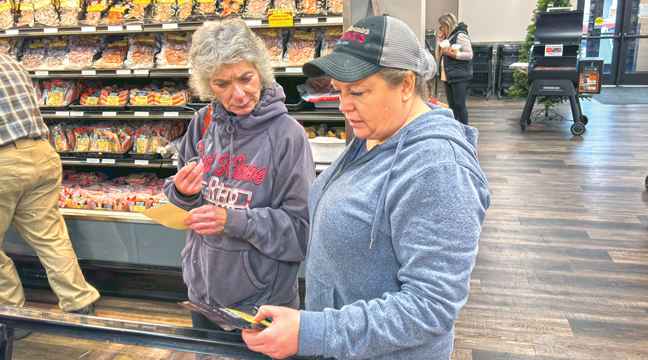The City of Becker is developing a vision and framework plan to guide them towards the transformation of the Hwy. 10/1st St. corridor.
City Planner Therese Haffner presented the project to council a few weeks back with the goal to revitalize and transform Hwy. 10 into an attractive, vibrant, sustainable place to shop, work, live and entertain.
As part of the planning process, a 6-10 member project advisory committee has been formed from various members of the EDA, planning commission and city council, along with area businesses and citizens at large.
The group is so far comprised of Haffner, Mayor Lefty Kleis, Council Members Rick Hendrickson and Lori Keller, Judy Bowatz of the planning commission, Phil Knutson of Becker Furniture World, Kevin Doty of Sherburne State Bank, Pat Larson of EDA, Larry Newell of LPI, Inc., a representative from Xcel Energy and Dina Kuhn (citizen at large).
Haffner says the group is established to help guide the planning process together with city staff and consultants and she anticipates facilitating up to six meetings with this group over the course of the project.
“We are just in the exploration stage right now, looking at the potential,” said Haffner. “From there, we plan to implement a plan going forward.”
The study area is the Hwy. 10 corridor within city limits — approximately between Edgewood St. SE and Liberty Lane for approximately a ¼ mile radius.
The work is organized in three primary project steps with corresponding tasks:
1). Understanding Hwy. 10
The group will utilize the next eight-to-nine weeks to focus on increasing the understanding of the project area’s assets, liabilities and potential while also developing a community supported vision for the corridor’s future.
That focus will include analyzing street network, traffic counts, pedestrian and bike network, transit facilities, parking facilities, land use and zoning, building design, placement and lot sizes, signage, sense of place, market trade areas, socioeconomics and commercial retail gaps.
They will also prepare project base maps using aerial photography and a scaled planimetric map illustrating streets, lot lines, building footprints, parking areas, trails and walks.
The group will conduct two focus group sessions and then solicit future comments and ideas from community members and citizens as well as review the analysis findings and develop a draft vision statement. Finally, they will develop and review a set of drafting planning principles for guiding preparation and evaluation of redevelopment scenarios.
2). Exploring the Potential
For the next 14-15 weeks, the committee plans to examine and evaluate alternative options for achieving the corridor vision by completing additional market analysis to include interviews with local and regional commercial developers, identify current land pricing, projected lease rates, perceived barriers or challenges to commercial redevelopment along Hwy. 10 and identify specific commercial types that have the potential to succeed along the corridor. They will then provide market input to the planning team for use in developing the draft corridor framework plan.
Next, they will conduct a planning workshop with city staff and committee members to review corridor precedents from other communities, work in several small groups, mark up aerial photos/maps with notes identifying potential sub districts and nodes and conceptual site designs for group discussion.
From there, they will build upon workshop activity to develop a draft corridor framework plan identifying areas for future redevelopment, conceptual illustrations of site design plan layouts and a set of precedent redevelopment examples from other corridors of a similar nature for review with the project committee. They will then refine the framework, conduct an open house and consolidate and summarize comments from the public for review.
3). Finalizing Framework
The final step is to focus on refining and finalizing the framework in a time frame of about 9-10 weeks.
The group will work to refine the project developed in step two into a set of components to include proposed character districts, nodes and early candidate redevelopment parcels. They will also recommended physical infrastructure modifications/enhancements and provide illustrations depicting proposed corridor character including several high potential new commercial, residential, mixed use developments, public space, highway and local streetscape.
They will then develop a sample proforma for an early candidate redevelopment site, implement strategies and phasing and recommend zoning modifications for establishing potential corridor specific design guidelines. A review of the framework will include inviting developer focus group participants to participate in reviewing and discussing the draft corridor framework plan at a future project advisory committee meeting.
Nearing the completion of the planning, the group hopes to post a revised draft of the corridor framework plan on the project web site for public input, facilitate a morning breakfast presentation targeted towards local business community leaders, facilitate a community open house to review and discuss the draft plan with interested citizens and previous focus group members, assist in presentation of draft plan to city council and incorporate input comments/ suggestions into final corridor framework plan document.
SEH has been contracted to participate in the planning and consulting with Urban Designer Bob Kost leading the team comprised of Mary Bujold, Heather Kienitz, Andrew Montgomery and Randy Sabart.
The project will take an approximate time period of eight months to complete.








